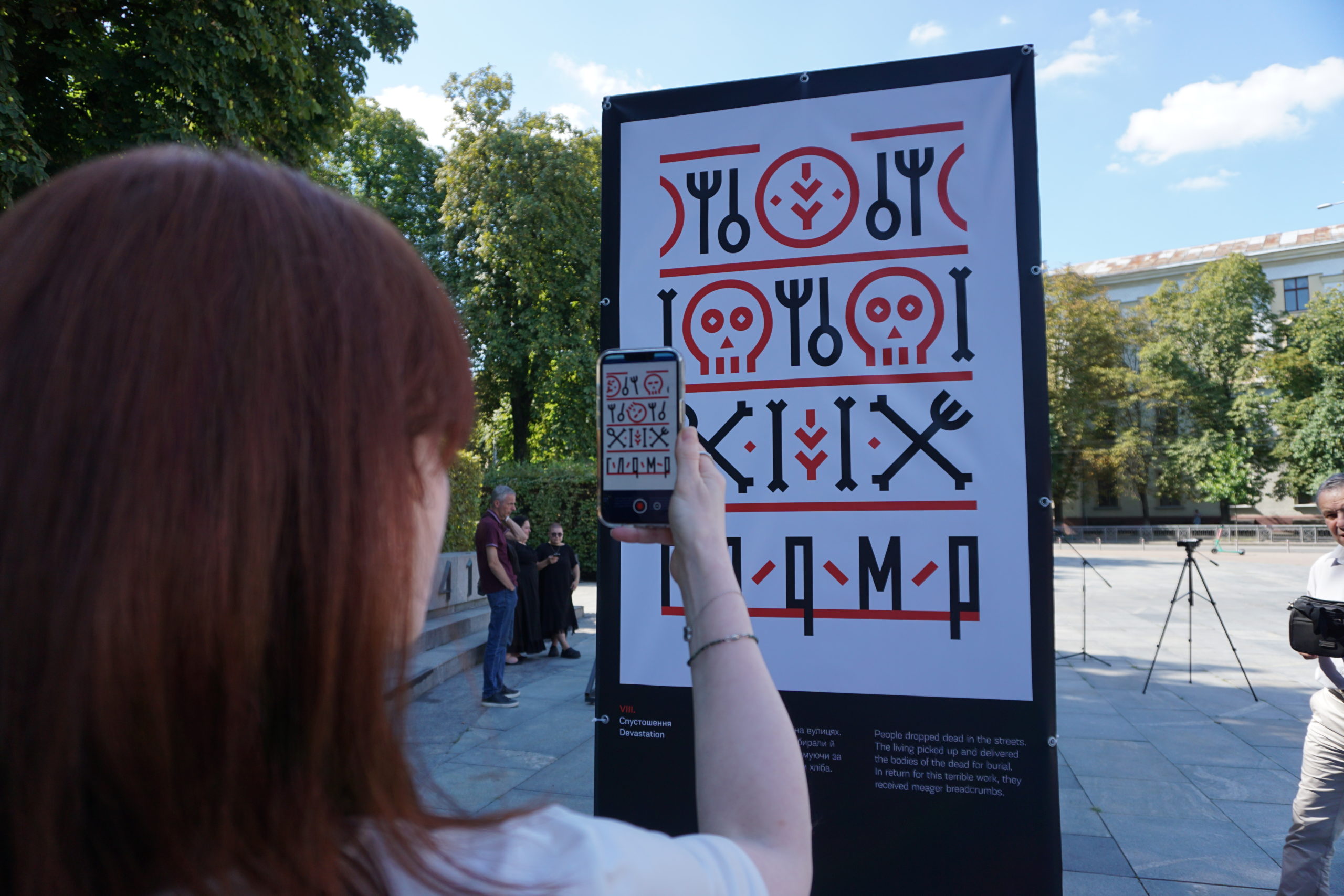The presentation of the project by designer Yuliya Fedorovych “HØLØDØMØR”
On Thursday, August 17, on Glory Square in Kyiv, the National Holodomor Genocide Museum presented the artistic project of designer and artist Yuliya Fedorovych, “ГØЛØДØМØР”.
Opening the event, the deputy head of the exposition and exhibition department, Maryna Bogush, said:
“This is one of the few projects of the Holodomor Museum that is not a documentary. We usually work with documentary projects, we operate with testimonies, documents, artefacts, witnesses’ things, and this makes our story objective. But now, when every day we see a new genocide taking place in a live format, we become less sensitive to what happened in the past, we are no longer so affected by it because we have our own traumatic experience. Therefore, our project today is an attempt to work with this loss of sensitivity, to rethink it, retelling the story of the Holodomor in new forms and formats.”
Maryna Bogush emphasized that Yuliya Fedorovych’s project is completely new in terms of its format for our museum because graphics are used here, complemented by an audiovisual series. Each of these posters has an element of augmented reality, that is, it can be “brought to life,” and a short story embedded in one or another visual image can be viewed.
The second part of the project is presented in the Hall of Memory of the Holodomor Museum. This is an animated film, dedicated to Yevhenia Sakevych-Dallas, a writer, public figure, and model of Ukrainian origin. She lived most of her life in the USA, however, she was born in Ukraine, where she survived the Holodomor, the uprooting of her family, and the arrest of her parents… “Yuliya Fedorovych tried to tell her entire difficult story in this film. And she did it very skillfully,” Maryna Bogush added.
“I am grateful to the museum and the artist for an extremely interesting presentation of the topic, a new understanding of the memory of the Holodomor and the crimes of the past,” the Acting Head of the Ukrainian Institute of National Memory, Volodymyr Tylishchak emphasized. – We must understand that the Holodomor is not only a tragedy of starvation, but it is primarily a crime of genocide committed against our nation. And it is precisely this crime that today, the same aggressor as 90 years ago, is trying to repeat by other methods. The memory and understanding of how this crime was committed back then helps us today to resist the aggressor.”
The art project will last until September 15.
We invite you to see the posters that can be “revived” – at Glory Square (Arsenalna station) to watch an animated film – at our Hall of Memory (3 Lavrska St.).
The Holodomor Museum expresses its sincere gratitude to Yuliya Fedorovych for her cooperation and to the Museum of the Revolution of Dignity for helping to implement the project.
And we sincerely thank Armed Forces of Ukraine that we are able to realize our ideas.
